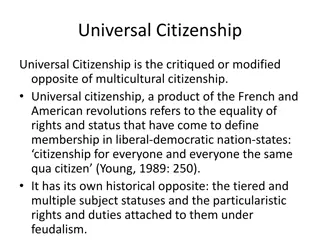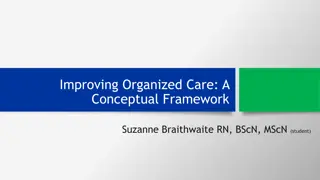Differentiated Care for Key Populations in Healthcare Settings
Explore the challenges and interventions involved in providing differentiated care for key populations such as people who inject drugs, men who have sex with men, sex workers, transgender individuals, prisoners, and others in closed settings. Understand the unique patient and health system challenges, clinical characteristics, and the implementation of tailored interventions to improve care delivery and outcomes.
Download Presentation

Please find below an Image/Link to download the presentation.
The content on the website is provided AS IS for your information and personal use only. It may not be sold, licensed, or shared on other websites without obtaining consent from the author. Download presentation by click this link. If you encounter any issues during the download, it is possible that the publisher has removed the file from their server.
E N D
Presentation Transcript
TITLE Differentiated Care for People who inject Drugs, Men who have sex with men, Sex workers, Transgender people, Prisoners and other people living in closed settings (select one or more) Presenter name Country
Differentiated care applies across the HIV care continuum
Challenges/Rationale PLEASE DESCRIBE THE SITUATION IN YOUR COUNTRY, REGION, CITY. IDENTIFY CHALLENGES IN REACHING, TESTING, TREATING AND RETAINING KP Patient challenges E.g. Travel and wait times Lack of treatment literacy Stigma and discrimination Comorbidities Complicated care Adherence support to remain on ART if feeling well and clinic visits are a hardship or unfriendly Health system challenges E.g. Reaching more people Identify more HIV positive people Improve HIV positive patient outcomes Reduce barriers to access Improve management of sick clients, clients with comorbidities etc. Increase retention of KP on ART if they are feeling well and are challenged by frequent visits
Who was care for? Define the clinical characteristics, population and context Clinical characteristics Stable/Unstable/Co- morbid Specific population Context Urban/rural, unstable context, epidemic type
An Overview of the intervention Describe the intervention What kind of model? Health care worker-managed group, client-managed group, facility-based individual model or out-of-facility individual model? Type of service For example government/NGO, community based or Community lead, Health facility satellite, DIC, outreach, involving/employing peers Describe the key elements of the intervention Describe the building blocks WHEN at what frequency are clients seen WHERE where is care provided WHO what cadre of staff facilitates the model WHAT services are provided Is ART delivery already part of the model?
Implementing the intervention Describe what it took to get this into place Was this a pilot project Has it been taken to scale Did you have to train staff? What materials did you use Was there a lot of supervision required How did you track progress? What M&E elements did you build into the model Do you know how much this cost? Overall was this feasible? Is there evidence of success? (including client outcomes, client satisfaction, HCW perspectives, waiting times, etc.
CHALLENGES AND SUCCESSES CHALLENGES SUCCESSSES
LESSONS LEARNED/RECOMMENDATIONS
Summary of standard of care vs. Differentiated service delivery model Facility based/traditional model Differentiated service delivery model BUILDING BLOCKS WHEN WHERE WHO WHAT OUTCOMES* Training requirements Cost effectiveness of model Evidence of success *Report relevant outcomes depending on the intervention e.g. HIV-Positive yield/% linkage to care/% initiated / % retention / % virally suppressed This is a summary table to compare existing services or the standard of care to the intervention/differentiated service delivery model























